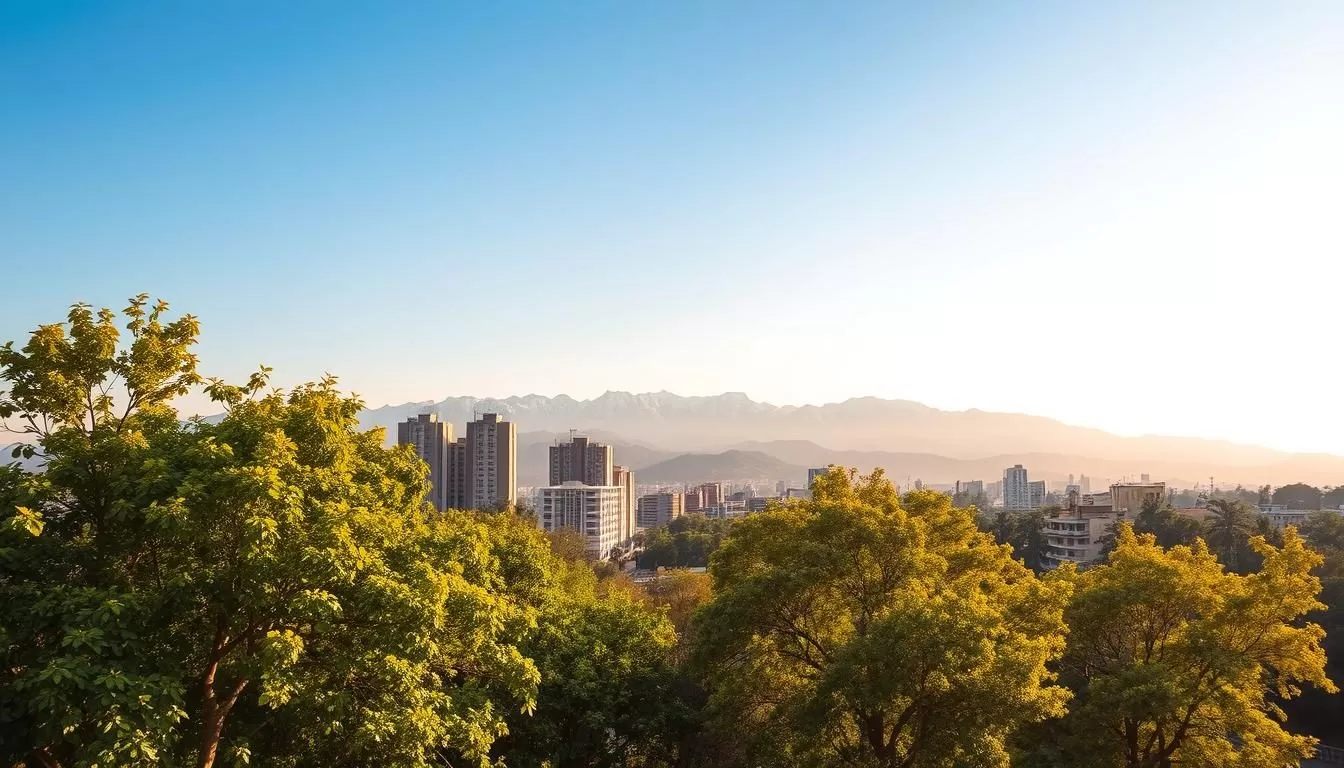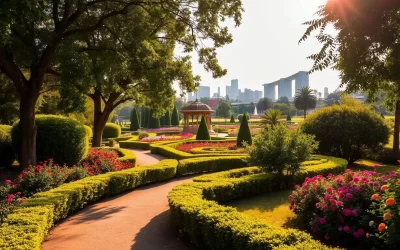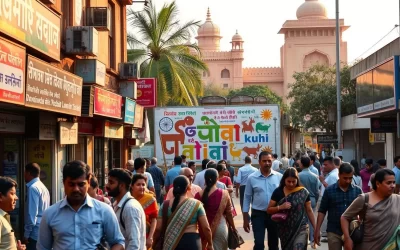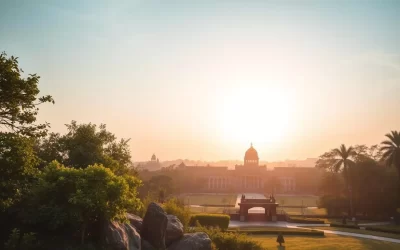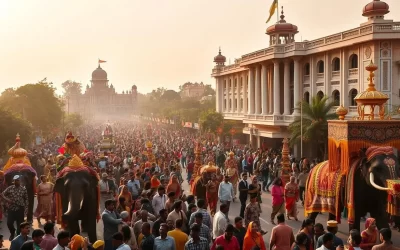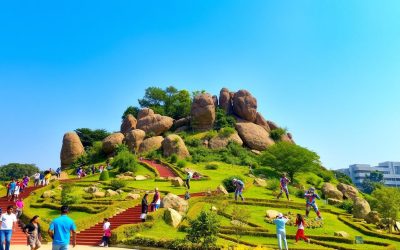As the capital of both Punjab and Haryana, Chandigarh offers a unique blend of cultural festivities and rejuvenating escapes.
You can spend your days exploring the Sukhna Lake or visiting the vibrant cultural attractions.
To make the most of your visit, understanding the city’s climate patterns is crucial. The city experiences three distinct seasons throughout the year, each offering different experiences for travelers.
Whether you’re looking for a summer adventure, monsoon retreat, or winter getaway, knowing the best time to visit will ensure you’re prepared for the weather and can enjoy the city’s famous attractions like Rock Garden and the Capitol Complex.
Chandigarh: The City Beautiful
Chandigarh, known as the City Beautiful, is a meticulously planned city that offers a unique blend of urban charm and natural beauty. This characteristic makes it an attractive destination for tourists.
Geographic Location and Significance
Located at the foothills of the Shivalik range, Chandigarh’s geography significantly influences its climate. The city’s layout is divided into 47 sectors, which provide excellent interconnectivity, making it easy for tourists to navigate and visit its major attractions. The city’s unique layout is a testament to its meticulous planning.
Why Weather Matters for Your Visit
Weather conditions play a crucial role in determining the quality of your visit to Chandigarh. The city’s climate patterns, characterized by three distinct seasons – summer, monsoon, and winter – impact the tourism experience. Understanding these patterns can help you plan your trip during the most comfortable time, ensuring you make the most of your visit.
| Season | Characteristics | Best Time to Visit |
|---|---|---|
| Summer | Hot temperatures | March to May |
| Monsoon | Heavy rainfall | June to September |
| Winter | Cool temperatures | October to February |
Understanding Chandigarh’s Climate Patterns
To make the most of your visit to Chandigarh, it’s essential to understand its climate patterns. The city’s weather is characterized by three distinct seasons, with significant variations in temperature and rainfall throughout the year.
Three Distinct Seasons
Chandigarh experiences a diverse range of weather conditions, with summer, monsoon, and winter seasons each bringing unique characteristics. The summer months are hot, while the monsoon brings significant rainfall, and winters are cool and dry. Understanding these seasonal variations is crucial for planning your trip.
Annual Temperature and Rainfall Overview
Over the course of the year, temperatures in Chandigarh vary dramatically, ranging from 48°F to 106°F. The hot season lasts for 2.5 months, with average highs above 98°F, while the cool season lasts for 2.6 months, with average highs below 75°F. The city receives most of its annual rainfall during the monsoon months, with July and August seeing the heaviest precipitation.
Summer Season in Chandigarh (March to May)
Chandigarh’s summer season, which spans from March to May, is known for its hot temperatures and cultural festivities. As you plan your visit during this time, it’s essential to understand the weather conditions and the experiences that await you.
Temperature Ranges and Weather Conditions
During the summer months, temperatures in Chandigarh range from 95°F (35°C) to 113°F (45°C), making it one of the hotter periods in the city’s climate calendar. May is typically the hottest month, with the heat reaching its peak intensity during midday hours.
Pros and Cons of Summer Visits
Visiting Chandigarh in the summer has its advantages and disadvantages. On the one hand, the cultural festivities like the Baisakhi festival in April offer a unique experience, celebrating the Punjabi New Year and the harvest season with vibrant processions and traditional dances. On the other hand, the intense heat can make outdoor activities challenging.
| Month | Average High Temperature | Average Low Temperature |
|---|---|---|
| March | 95°F (35°C) | 68°F (20°C) |
| April | 104°F (40°C) | 75°F (24°C) |
| May | 113°F (45°C) | 82°F (28°C) |
Cultural Events and Festivals (Baisakhi)
The Baisakhi festival, celebrated in April, is a significant cultural event during the summer season. It’s a time when the city comes alive with cultural festivities, including traditional dances and processions. You can experience the rich heritage of Punjab and enjoy the vibrant atmosphere.
Monsoon Season in Chandigarh (June to September)
The monsoon season in Chandigarh is a time of transformation, bringing heavy rainfall and lush green landscapes. As the southwest monsoon winds arrive in June, the city experiences a significant change in its weather, continuing until September.
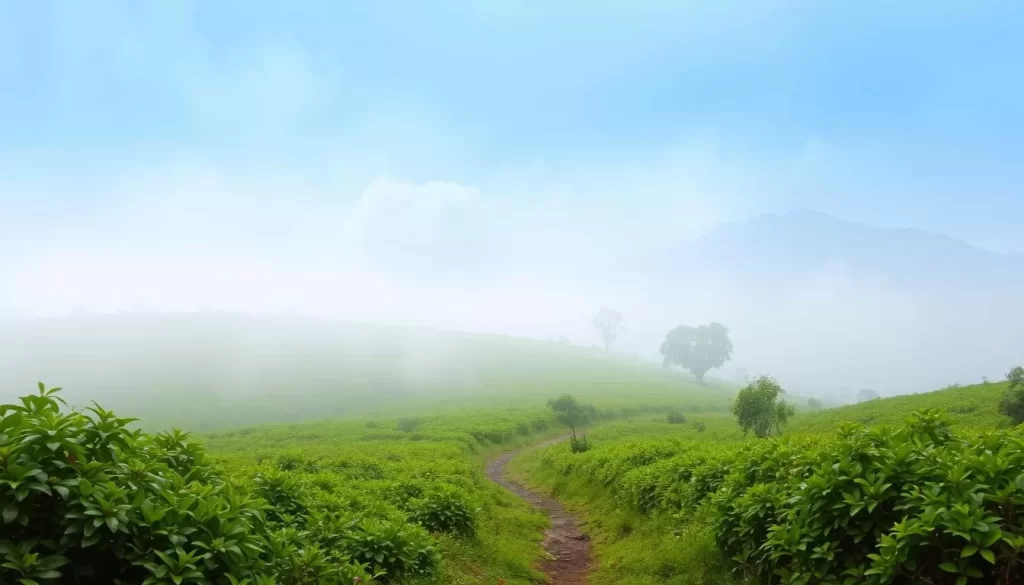
Rainfall Patterns and Humidity Levels
During the monsoon season, Chandigarh receives substantial rainfall, totaling between 700 mm and 1,200 mm annually. The temperatures remain warm, typically ranging from 77°F (25°C) to 86°F (30°C), though the high humidity levels can make it feel much warmer. The abundant rainfall turns Chandigarh into a lush green landscape, making it particularly beautiful for nature photography and visits to gardens like the Zakir Hussain Rose Garden.
Pros and Cons of Monsoon Visits
Visiting Chandigarh during the monsoon season has its advantages and disadvantages. On the one hand, the fewer crowds and the romantic rainy ambiance make it an attractive time to explore the city’s scenic beauty. On the other hand, some outdoor activities may be limited during heavy downpours. Nonetheless, the monsoon season offers a unique experience for those who enjoy nature and cultural celebrations.
Teej Festival and Other Monsoon Celebrations
The monsoon season brings cultural celebrations like the Teej Festival, when Punjabi women gather at the Rock Garden to celebrate with traditional swings, henna application, and festive foods. This festival is a significant part of Chandigarh’s cultural heritage, showcasing the city’s rich traditions and customs.
Winter Season in Chandigarh (October to February)
Chandigarh’s winter season, spanning from October to February, is characterized by cool days and chilly nights, making it a great time to explore the city’s outdoor attractions. The winter season brings a unique charm to the city, with temperatures ranging from 3°C to 23°C.
Temperature Ranges and Weather Conditions
During the winter months, daytime temperatures typically hover around 20°C, with abundant clear skies, creating ideal conditions for exploring outdoor attractions and gardens. However, nighttime temperatures can drop significantly, sometimes approaching freezing, so evening activities require warm clothing.
Pros and Cons of Winter Visits
Visiting Chandigarh during the winter season has its advantages and disadvantages. On the one hand, the pleasant days make it perfect for sightseeing. On the other hand, the chilly nights require proper planning and warm clothing.
Winter Festivals
The winter season in Chandigarh is also a time for cultural celebrations. The city hosts the Chandigarh Carnival at Leisure Valley in November, and the spectacular Rose Festival in February, which showcases over 1,600 varieties of roses at the Zakir Hussain Rose Garden. These events make the winter season a great time to experience the city’s vibrant culture.
Overall, the winter season, from October to February, is a great period to visit Chandigarh, with its pleasant weather and exciting cultural events making it a memorable experience during this time of the year.
Chandigarh (UT), India: Best Months for a Weather-Savvy Trip
To make the most of your visit to Chandigarh, it’s crucial to choose the right time of the year. The city’s climate varies significantly across different months, impacting the quality of your trip.
October to November: The Golden Period
For the most comfortable weather conditions, October to November represents Chandigarh’s golden period. Daytime temperatures range between 68-77°F (20-25°C) with minimal rainfall. This autumn period offers clear skies, moderate humidity, and pleasant days perfect for exploring Chandigarh’s outdoor attractions.
February to March: The Spring Sweet Spot
Another favorable period is February to March, when spring brings comfortable temperatures between 59-77°F (15-25°C) and blooming gardens. These months allow you to experience Chandigarh’s famous architectural sites and outdoor recreational areas without the extremes of summer heat or winter chill.
| Best Time to Visit | Weather Conditions | Ideal Activities |
|---|---|---|
| October to November | Pleasant temperatures, minimal rainfall | Exploring outdoor attractions |
| February to March | Comfortable temperatures, blooming gardens | Visiting architectural sites, outdoor recreation |
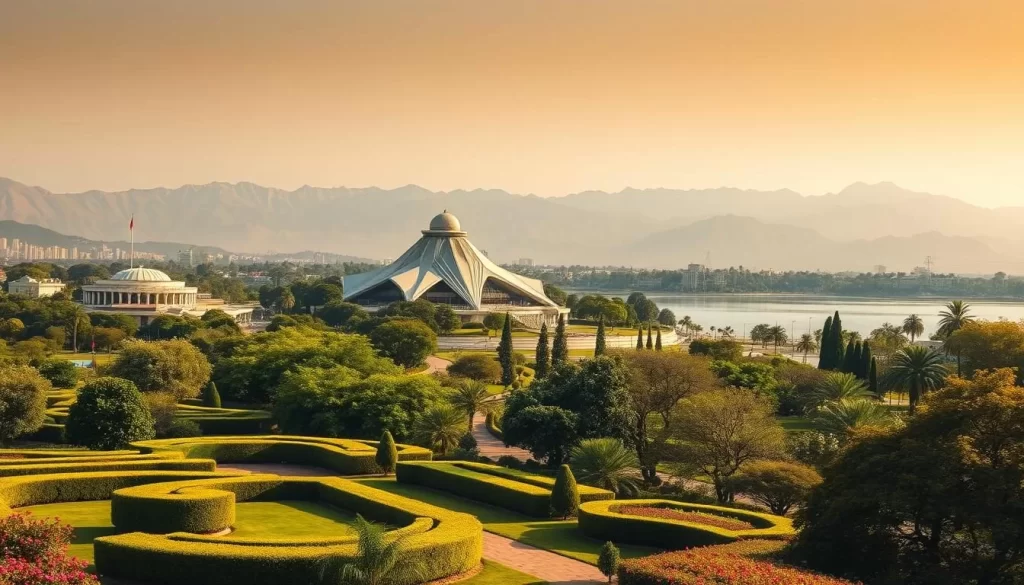
Choosing the right months for your visit ensures a memorable and enjoyable experience in Chandigarh. Whether you prefer the autumn or spring season, Chandigarh offers a delightful experience for tourists.
Month-by-Month Weather Breakdown
Chandigarh’s climate varies significantly throughout the year, making it essential to break down the weather month by month. This breakdown will help you plan your trip according to your preferences.
January to April
The early months of the year are quite chilly, with January being the coldest month, averaging lows of 49°F and highs of 69°F. As the months progress, the temperature rises significantly, with April seeing averages between 70°F to 96°F. You can expect a gradual warming trend from February onwards, with the Rose Festival in February being a highlight.
May to August
Summer peaks in May and June, with temperatures often exceeding 100°F. The monsoon season starts in July, bringing heavy rainfall and high humidity. July is the wettest month, with an average of 17.3 days of precipitation and 8.3 inches of rainfall.
September to December
As the monsoon recedes in September, the weather starts to moderate, with comfortable temperatures around 90°F. October is particularly pleasant, with clear skies 95% of the time and temperatures between 65°F to 87°F. November and December bring cooler temperatures, marking the return of winter, with December days averaging 72°F and nights cooling to 51°F.
| Month | Average Low | Average High | Rainfall Days |
|---|---|---|---|
| January | 49°F | 69°F | 2 |
| April | 70°F | 96°F | 2 |
| July | 75°F | 90°F | 17.3 |
| October | 65°F | 87°F | 1 |
What to Pack for Different Seasons
Chandigarh’s climate varies significantly across the year, making it essential to pack accordingly. The city’s weather conditions range from scorching summers to chilly winters and heavy monsoon rainfall, each requiring specific preparations.
To ensure a comfortable trip, consider the essentials for each season.
Summer Essentials
For summer visits (March to June), pack lightweight, breathable clothing, along with sunglasses, a wide-brimmed hat, sunscreen (SPF 50+), and a reusable water bottle to stay hydrated in temperatures that can exceed 100°F.
Monsoon Must-Haves
During the monsoon season (June to September), it’s advisable to bring quick-drying clothes, waterproof footwear, a compact umbrella, rain jacket, and waterproof covers for electronic devices to navigate the frequent downpours.
Winter Wardrobe
For winter travels (October to February), prepare for significant day-night temperature variations by packing layers—light sweaters for daytime and heavier jackets, scarves, and warm socks for evenings when temperatures can approach freezing.

- Regardless of the season, comfortable walking shoes are a must for exploring Chandigarh’s sector layout and extensive gardens.
- Modest clothing is appropriate when visiting religious sites throughout the year.
Top Attractions to Visit by Season
As you plan your trip to Chandigarh, you’ll find that the city’s attractions are tailored to provide unique experiences during different seasons. Whether you’re looking for a relaxing getaway or an adventurous escapade, Chandigarh has something to offer.
Summer-Friendly Destinations
During the summer months, indoor attractions like the Government Museum and Art Gallery provide air-conditioned respite. You can also visit Sukhna Lake early in the morning to enjoy boating and walking in the cooler temperatures. The Rock Garden is another great option, with its shaded pathways making it comfortable to explore.
Monsoon Marvels
The monsoon season transforms Chandigarh’s gardens, making Leisure Valley and Zakir Hussain Rose Garden lush and vibrant. Sukhna Lake takes on a misty, romantic atmosphere with fuller water levels, making it a perfect spot for a relaxing day out.
Winter Wonders
Winter is ideal for exploring the Capitol Complex, a UNESCO World Heritage site, and enjoying the bustling Sector17 Plaza for shopping. You can also spend your days at outdoor attractions like the Mahendra Chaudhary Zoological Park when temperatures are pleasantly cool.
Weather-Based Travel Tips for Chandigarh
Chandigarh’s diverse weather conditions require careful planning to ensure a smooth and enjoyable trip. The city’s grid-based sector system makes navigation relatively straightforward, but weather conditions can impact your transportation choices throughout the year.
Transportation Considerations
During summer heat waves, consider using air-conditioned taxis or ride-sharing services for longer journeys, and schedule outdoor activities for early morning or evening hours. In contrast, monsoon season can occasionally disrupt transportation with waterlogged roads, so it’s wise to allow extra travel time and book accommodations near the attractions you plan to visit.
Accommodation Recommendations
Choose hotels with swimming pools during summer months, properties with covered parking during monsoon, and rooms with adequate heating during winter nights. This will ensure a comfortable stay regardless of the season.
Health and Safety Precautions
- Carry oral rehydration salts during summer to prevent heat exhaustion.
- Use mosquito repellent during monsoon to reduce disease risk.
- Keep hand sanitizer handy year-round for general hygiene.

Conclusion
To make the most of your Chandigarh trip, it’s essential to consider the seasonal patterns and plan accordingly. The best time to visit Chandigarh is during the winter season, particularly from October to November and February to March, when the weather is pleasant and conducive to exploring the city’s outdoor attractions.
While Chandigarh experiences distinct seasonal variations, each season offers unique advantages. Winter months provide comfortable weather for sightseeing and participating in cultural festivals. Although summer and monsoon seasons present certain challenges, they also offer unique experiences like cultural festivals and lush landscapes.
By understanding weather Chandigarh patterns and packing appropriately, you can enjoy this beautifully planned city regardless of when you choose to travel. Whether you’re looking to explore architectural marvels, gardens, or cultural heritage, planning your visit during the best time of the year will enhance your Chandigarh experiences.
The above is subject to change.
Check back often to TRAVEL.COM for the latest travel tips and deals.
